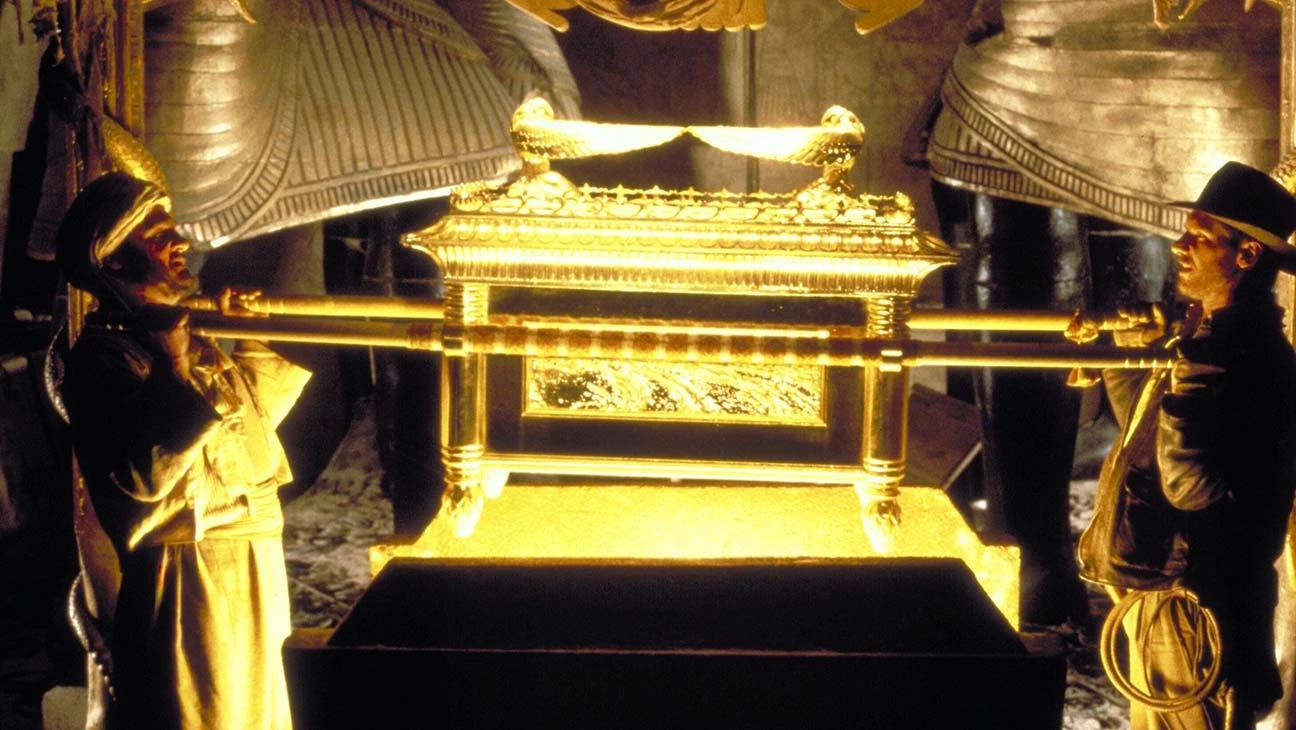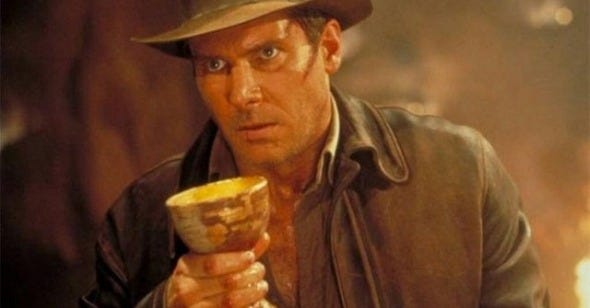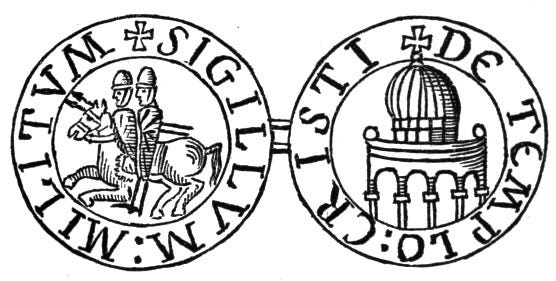TL;DR Legends about magic artifacts and the secret societies who possessed them arise during major inflections in the history of finance. That’s because these holy relics were code words or allegories that stood in for an awesome secret: we are not who we think we are. The fortunes of the rich depend on the rest of us continuing to be fooled by this illusion. To escape persecution from the powerful, those who stumbled onto this secret organized themselves into secret societies and referred to holy relics as allegories or code words.
There is a powerful secret that animates all of history. Upper economic classes understand this secret. They always have. And since wealthy elites live lavishly off the backs of the lower classes, they use their clout to keep it hidden from common folks like you and me. This biggest secret in history is a direct threat to their way of life. If this cat was ever let out of its bag, political control would suddenly become impossible.
To avoid inevitable persecution, re-discoverers of this amazing secret sometimes formed secret societies. To further confound the authorities, they avoided speaking of it directly. Instead, they used codes or allegories; they referred to wondrous objects imbued with magical power. The two most famous examples are the lost Ark of the Covenant and the Holy Grail.
Before revealing the secret, we’ll take a closer look at the folklore surrounding the Ark and the Grail—and two of the secret societies that gave rise to those stories. The sharpest readers will, of course, figure out where we’re headed before I pay off the secret at the end.
The Ark of the Covenant
According to the Old Testament book of Exodus, the Ark of the Covenant was a chest. It was the repository for the actual stone tablets on which the original Ten Commandments were engraved. It also contained the Rod of Moses’ brother Aaron, a staff which miraculously “sprouted and put forth buds and produced blossoms” according to the book of Acts.
The Ark was lost in 587 B.C. That was the year the Babylonian King Nebuchadnezzar sacked the city of Jerusalem and destroyed the Temple of Solomon, where it was kept. An old Greek version of the book of Ezra, known as 1 Ezdras, suggests that the Ark was seized by the Babylonians: "And they took all the holy vessels of the Lord, both great and small, with the vessels of the ark of God, and the king's treasures, and carried them away into Babylon.” This is the very last mention of the Lost Ark before it drops out of folklore for a thousand years.
Along with the Ark, Nebuchadnezzar also dragged the inhabitants of Jerusalem back to Babylon as his slaves. There, the Jews learned about the old Babylonian tradition of debt forgiveness. That’s the same tradition commanded by Law #48 of the Code of another famous Babylonian king, Hammurabi. By wiping out personal debts, the kings of the ancient Near East reset the financial scoreboard whenever it got too lopsided. They didn’t do this because they were nice guys. They did it for two reasons. (1) So the heavily indebted wouldn’t simply cut their losses and move to a different city-state. And (2) to make sure that no private citizen got wealthy enough to challenge the king for power. To avoid these twin pitfalls and preserve his kingdom, the king would raise a symbolic “torch of freedom” to announce a clean financial slate. This ancient tradition is why the Statue of Liberty was conceived as holding a torch aloft.
50 years later, the Bablyonians got a taste of their own medicine. Cyrus the Great and his Persian army conquered Babylon and sent the Jewish captives home. The whole story can be found in the Old Testament book of Nehemiah. Back in Jerusalem, Nehemiah and the Jews rebuilt the Temple of Solomon and formalized the Jewish Bible, or Old Testament. They baked Babylonian ideas about debt forgiveness into this text, where it can still be found today. The Liberty Bell in Philadelphia is inscribed with the words “Proclaim liberty throughout all the land unto all the inhabitants thereof". The full text is from the Old Testament book of Leviticus: “And ye shall hallow the fiftieth year, and proclaim liberty throughout all the land unto all the inhabitants thereof: it shall be a jubile unto you; and ye shall return every man unto his possession, and ye shall return every man unto his family.”
The episode of the Jewish Captivity is a pivotal moment for both the Ark of the Covenant and the lost tradition of debt forgiveness. And it set the stage for the ministry of Jesus.
The Holy Grail
The Roman Empire was history’s biggest experiment in NOT forgiving debts. It got so large that people couldn’t simply leave it. For the first time in history, society had grown to the point that there was no escape for the hopelessly indebted. They tried several times, in what was called the Secessions of the Plebs. But this tactic ultimately failed. The predictable result followed; the wealth of Rome gradually concentrated into a few massive fortunes owned by a tiny minority. Legendary historian Will Durant wrote “Wealth mounted, but it did not spread; in 104 B.C. a moderate democrat reckoned that only 2,000 Roman citizens owned property”.
In an empire of 5 million, that massive wealth disparity was a ticking time bomb. Rome was overdue for an apocalypse of biblical proportions. At that moment, Jesus stepped onto the stage of history. Hailing from imperial Palestine and being Jewish himself, he was all too familiar with the debt forgiveness codified in the Jewish Bible. He waved scrolls with that holy text in the faces of his congregations, warned of armageddon, and informed them that forgiveness was their only hope of salvation. “Give us this day our daily bread,” goes the Lord’s prayer from Matthew, “And forgive us our debts, as we forgive our debtors.”
Of course, his message did not go over well with the authorities. The notorious public execution of Jesus brings us to the Holy Grail. By the Medieval period, the folklore surrounding the cup used at the last supper was fully fleshed out. It was also said to have been used by Joseph of Arimathea to catch the blood of Jesus as he died on the cross.
The Holy Grail is the central macguffin in the tale of King Arthur and his Knights of the Round Table. According to that story, Joseph of Arimathea brought the cup from Jerusalem to Glastonbury Abbey in Somerset, England. He arrived with a magical staff that would blossom with flowers, exactly like the Rod of Aaron supposedly contained within the Ark of the Covenant. The legend of Glastonbury Abbey is that it is the final resting place of both King Arthur and of the Holy Grail.
The Knights Templar
In the decades following the crucifixion, the Romans once again destroyed the Temple of Solomon. It would be another thousand years before whispers of the Ark and the Grail started swirling again. During the time of the Crusades, the Knights Templar arrived in Jerusalem and set up shop on the Temple Mount, where the Temples of Solomon were once located. Rumor had it that the Knights dug up a holy relic of unimaginable power. This relic was supposed to be either the Ark, the Grail, or both.
The real history of the Knights Templar is that they were proto-bankers. They were an order of warrior monks, founded to protect pilgrims bound for the Holy Land. They soon realized they could make their bodyguard gig much less painful if they issued letters of credit for pilgrims to carry, instead of actual gold or silver coins. You’d deposit your coins at the Temple Church in London or Paris and get a letter of credit in return. Then you’d redeem the letter of credit for coins again once you reached your destination. These letters were worthless to the cutthroats and brigands waiting along the pilgrim roads, who soon had to find other employment thanks to the Knights.
You can still visit the Temple Church in London to this day. Its floor plan is round— a copy of the Church of the Holy Sepulcher in Jerusalem. But the Temple Church in Paris was destroyed when the Pope declared war on the Knights Templar. Friday, October 13th, 1307 was the original Black Friday the Thirteenth. On that morning, crowned heads across Europe simultaneously unsealed orders from Pope Clement V to arrest the Knights. They stood accused of sexual perversions and devil worship. Confessions were extracted by torture.
Even a cursory reading of the Bible makes it clear that Christianity is an anti-rich, anti-debt ideology. That’s exactly what we should expect from a religion born inside a Roman Empire on the verge of collapse. “It is easier for a camel to go through the eye of a needle,” it says in both Matthew and Mark, “than for a rich man to enter into the kingdom of God.” Accordingly, the charging of interest was banned by the church until well into the 16th century. There is no shortage of scriptural basis for such a ban. In a Medieval world where charging interest on loans was illegal, the Knights credit scheme made them so rich and powerful that they threatened the King of France. Phillip IV fell into such debt to the Knights that he could never hope to repay it. He was desperate. So he called in a favor from his man Clement V, whom he had been crucial in getting elected to the office of the Pope. That is where the ascertainable history of the Knights comes to an end.
Switching from history back to folklore, the rumor is the Knights Templar went underground. They were always a secret society. Therefore, if any of them survived the persecutions of 1307, it only makes sense that they would respond by ratcheting up that secrecy.
The Freemasons
Just like the Knights Templar, the Freemasons are a secret society. One that still exists today. And there’s no question that it draws heavily on Templar traditions. In the Scottish Rite, for example, there is a specific degree called the "Order of the Temple" or "Knight Templar." The connection is there. The only question is whether there is unbroken continuity between these two secret societies.
King Edward II of England hesitated when he read the Pope’s orders on the morning of the very first Black Friday. The 23 year old had just become king that past summer. And the Knights were important political allies to him. So he dragged his feet from October until January. That headstart gave the English Knights almost three months to disappear before the King begrudgingly confiscated their remaining property. Legend has it that they were sheltered by the Sinclair family until they quietly merged with the stonemasons guilds that were widespread in Europe at the time.
The Sinclairs were a prominent noble family of Scotland during the Medieval period. In the 15th century, Sir William St. Clair (or Sinclair) built Rosslyn Chapel just 30 miles south of Edinburgh. The Sinclairs' connection to Rosslyn Chapel goes beyond its construction. Legend and myth suggest that the chapel was intended to house significant relics, including the Holy Grail, the Ark of the Covenant, or the Templar treasure. It’s festooned with both Templar and Freemason symbolism, including Templar crosses and something called the Apprentice pillar.
You can still visit Rosslyn Chapel to this day. They embrace their connection to the Templars; the gift shop is packed full of Knights Templar souvenirs and trinkets. Oddly, Rosslyn Chapel is positioned on the same meridian as Glastonbury Abbey. It’s almost exactly 375 miles due north from the abbey ruins. Because this structure sits at the intersection of legends surrounding the Ark of the Covenant, the Holy Grail, the Knights Templar, and the Freemasons, Dan Brown used it as the final resting place for the Grail in his 2003 thriller The Da Vinci Code.
Whatever their origins, the Freemasons emerged as a political force in good time to create the world’s first central bank in 1694. The Bank of England was founded by a consortium of forty Edinburgh and London bankers and merchants, many of whom were Freemasons or had close ties to the Masonic community. One of the bank's key founders, Sir John Houblon, was not only the first Governor of the Bank of England but also a prominent Freemason.
If there is any truth to the notion of continuity between the Templars and the Freemasons, then Edward’s hesitation to persecute the Templars resulted in England becoming the hub for international banking and the seat of a global mercantile empire. Whether directly or indirectly, the proto-banker Knights Templar gave way to Freemasons, who in turn brought us the central banking scheme under which we are all living out our lives today.
Finance
Legends about holy artifacts arise around key moments in the history of banking. The Ark of the Covenant was last heard from at the same moment that Babylonian debt forgiveness merged with the Abrahamic religious tradition. The Holy Grail entered history as a result of Jesus trying to revive debt forgiveness within the dying Roman Empire. A thousand years after that, the Knights Templar stumbled into a banking fortune, giving rise to rumors that they found one or both of those holy artifacts and harnessed their power. The tangled web of legends surrounding these artifacts suggests that something of massive significance was relocated from the Holy Land to Britannia during the Middle Ages, mirroring Britain’s eventual destiny of leading the world out of the Medieval period and into the Industrial Revolution as its banking center.
I discovered the hidden dangers of debt first hand–while being suffocated under student loans. Compound interest is an exponential function, and human brains have a very difficult time intuiting that kind of arithmetic. If I asked you to fold a piece of paper in half 100 times, you would expect the resulting packet to be about as thick as an old phonebook. Not thicker than the known universe, which would be the actual result. I learned this lesson about compound interest the hard way.
Finance is the essence of societal growth. That’s why it’s regarded as magical, and why religion is always so concerned with debt. New farmers can’t get their operations off the ground without a loan of seeds, to be repaid after the harvest. Like the waxen wings of Icarus, finance has the power to bear us all aloft or to bring us all to ruin.
The early civilizations of the Fertile Crescent understood and respected the hidden dangers of compound interest. Jesus brought that knowledge to the outskirts of the Roman Empire. During its twilight, the oligarchy who hoarded the wealth of Rome took over the Christian church. Because debt forgiveness means writing down the balance sheets of the wealthy for the benefit of society as a whole, they defanged Jesus’s message. His calls for forgiveness and redemption were conveniently relocated over the horizon of death, where it couldn’t impact the bottom lines of the rich. Once the rich got control of the church, the poor could only expect salvation only in the next life.
Today, few understand what the text on the Liberty Bell really means. Or why the Statue of Liberty is forever raising her torch. Two thousands years after his gruesome public execution, we still haven’t come to terms with the teachings of Jesus.
Ego
In Dan Brown’s Da Vinci Code, the Holy Grail is an allegory for the bloodline of Jesus. At the end of the story, it’s not a cup that the protagonist finds beneath Rosslyn Chapel. It’s the sarcophagus of Mary Magdalene. She was a prostitute in the four gospels that were ultimately approved by the Roman government. But in the many non-canonical gospels available to us, she is the wife of Jesus—pregnant at the time of the crucifixion. She carried the bloodline of Jesus in her womb. Or in other words, she is the magical vessel that held the blood of Jesus.
That idea brings us, at last, to the greatest secret in history: none of us are who we think we are.
We certainly are not our bodies; we think of ourselves as having bodies. The thing that has a body is your ego. It rides around inside your head. Your ego is your mental conception of yourself. As a subjective observer, you triangulate on external objects by focusing your eyes. When I ask you to focus on yourself, you can only mirror this triangular pattern and interpolate backwards to a reverse focal point somewhere behind your eyes. This gives rise to the uncanny feeling that you are riding around inside your own head, looking out through your eyes like a windshield. That inverted focal point feels like the seat of your consciousness. It feels like you. But it’s really just an optical illusion.
In reality there is nothing behind your eyes but brain meat. The ego is a mere mental construct—a handy interface that has the same relationship to reality that your desktop icons have to the physical circuits of your motherboard. It’s useful, but not real. Our egoic identities are like costumes worn on stage. Most of us go our whole lives mistaking the costume for the actor, never waking up from the spell.
With enough prayer, meditation, fasting, or even psychedelic drugs, it is possible to dispel the illusion and identify not as an individual, but as a series of individuals. The sensation of enlightenment feels like flipping a switch. Rather than identifying as individual waves washing up on shore, you identify with the water itself. This is how you survive your own death—by simply redefining what you consider yourself to be. Individual people, like waves, have a tragically short lifespan. But a series of people is immortal and exists outside time. And of course, when you think about it, we all belong to the same series. There is only one.
It’s a secret that’s classically characterized as feminine, and why Leonardo Da Vinci depicted his Mona Lisa with a knowing smile. Only women experience their individual existences forking into two individual existences. The face of the Mona Lisa is plastered across the cover of Dan Brown’s The Da Vinci Code. But he never made this explicit connection. He never went far enough.
This is the secret symbolized by the Ark of the Covenant and by the Holy Grail. That’s why legends about those magical artifacts always spring up around inflection points in the history of banking. It’s because the awesome power of compound interest can either be used to further the condition of all people, or it can be used for the glorification of individual egos. The fundamental message of Jesus was that the latter is a one-way ticket to hell.
That message has been intentionally garbled over the centuries by the powerful, who always prefer not to take a haircut on their balance sheets—no matter the cost to society. They want us to identify with our egos as much as possible. The economy and apparatus of state are wholly constructed on the basis of these individual egos; a reorganization would mean a reconsideration of their privileged position. That’s what makes people who understand the secret such a threat to the powers-that-be in all times and places.
It’s easy to see why people who have stumbled upon the greatest secret in history often feel the need to organize themselves into secret societies. Perhaps unwisely, I am taking the exact opposite approach by publishing this secret (and much more) in the newsletter you are currently reading. I believe that the constellation of ideas contained within System Failure is the only way out of the rapidly deteriorating situation which we are all living through. If you agree, I hope you’ll help me out by spreading the good word.










Interesting post. I am wondering if you've ever heard of G.I. Gurdjieff. If not, I think you would find what he has to say. Most people start, not by reading him, but by reading P.D. Ouspensky, but I find Gurdjieff to be far more interesting. His book, "Beelzebub's Tales to His Grandson" starts off in a fairly annoying way, but I find it worthwhile. He refers to himself as an Esoteric Christian. He has some strange notions, but they are interesting. It is about Beelzebub who is on a spaceship flying around the cosmos. When he spots the strange planet earth, he tells his grandson all about the comical beings who inhabit that planet and the crazy things they do and why they do them. You can read it online at this link: https://www.holybooks.com/beelzebubs-tales-grandson-gurdjieff/